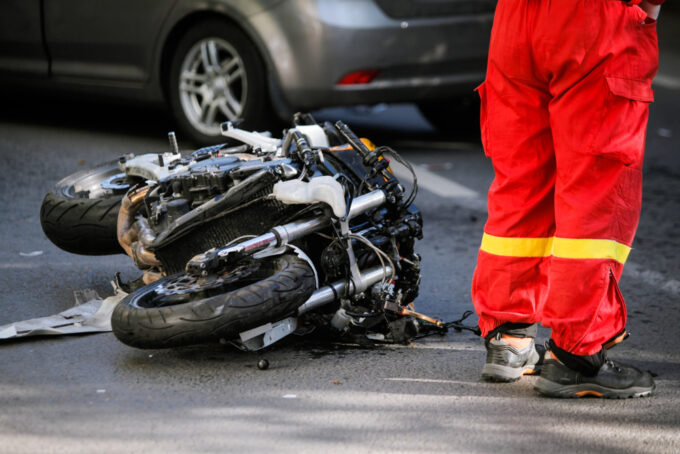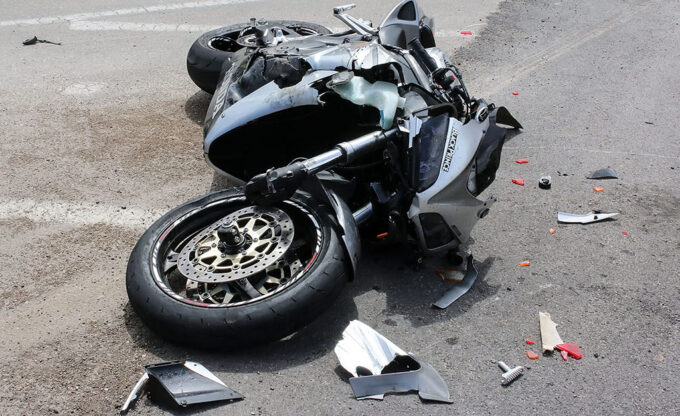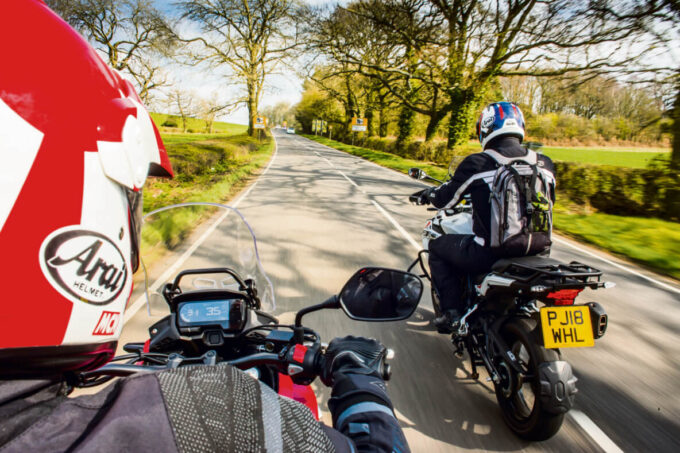Riders are often confronted with numerous terms and coverages when it comes to two-wheeler insurance, and one aspect that frequently raises questions is the Personal Accident cover in bike insurance: Is it mandatory or is it an optional add-on? Unveiling the is important of this coverage for riders seeking comprehensive protection. In this exploration, whether it’s a mandate or a choice we will dive deep into the Personal Accident cover in bike insurance online, shedding light on its significance, and why riders should pay attention to this aspect of their policies.
Understanding Personal Accident cover

Source: mva.bh
Personal Accident cover is a component of bike insurance created to provide financial protection in the unfortunate event of an accident leading to bodily injury, disability or death of the policyholder. This coverage extends beyond the bike itself, focusing on the well-being of the rider.
Limits and inclusions
IRDAI has set a minimum coverage limit for Personal Accident cover in bike insurance policies. This limit is set at ₹15 lakhs for the policyholder as of the latest regulations. Riders need to be aware of this regulatory stipulation and confirm that their insurance policy adheres to these minimum requirements.
Scope of coverage
Personal Accident cover typically extends its protective umbrella to cover accidental death and permanent total disability.
Optional enhancements

Riders have the option to enhance their Personal Accident cover for additional protection while the regulatory requirement ensures a baseline coverage. Riders often offer the flexibility to increase the coverage amount under the policy. These enhancements go beyond the mandatory limits and cater to individual preferences and circumstances.
The importance of Personal Accident cover
Understanding the importance of Personal Accident cover is essential for every rider beyond regulatory mandates. Accidents can lead to unforeseen medical expenses, rehabilitation costs or even loss of income due to disability. Personal Accident cover provides a financial safety net during these challenging times, ensuring that riders and their families are not burdened with additional financial stress.
Claim process and documentation
The claim process for Personal Accident cover involves notifying Kotak General Insurance promptly in the unfortunate event of an accident. The documentation typically includes the claim form, medical certificates, police reports and other relevant documents.
Policy renewal considerations

Source: americanexpress.com
Riders should pay attention to the Personal Accident cover to ensure continuous protection when renewing bike insurance policies. It’s an opportunity to reassess the coverage amount, especially if there have been changes in personal circumstances or if the rider seeks additional protection for family members.
The evolution of personal accident cover in India
The personal accident cover in India has evolved significantly over the years, keeping pace with the changing risk landscape and evolving regulatory frameworks. In the early 2000s, the concept of personal accident cover was still in a nascent stage. Standalone personal accident policies were few and far between, while the cover under other insurance plans was rather basic.
The IRDAI regulations of 2002 marked a defining point when the regulator formally introduced standard provisions for personal accident cover under the India Motor Tariff. This step institutionalized the cover under motor insurance, ensuring wider adoption. Initially, the mandated minimum sum insured was only Rs 1 lakh. But over the years, especially in the last decade, revisions in IRDAI guidelines have led to a 5x increase in minimum coverage. The latest revision sets the bar at Rs 15 lakhs.
Beyond regulatory measures, insurers have also played a key role in advancing personal accident cover for two-wheelers. From basic covers, insurers now offer comprehensive and customized PA products to suit individual needs. Add-ons like hospital cash benefits also provide policyholders with financial assistance over and above the sum insured. There is also greater flexibility now in terms of policy tenure, coverage for co-passengers, and the ability to enhance the basic cover.
By bridging protection gaps and keeping pace with the evolving landscape, personal accident cover has come a long way in its evolution history. But there are still areas for improvement to deepen penetration.
Leveraging technology to enhance two-wheeler safety

Source: tataaig.com
While personal accident covers provide financial protection after accidents, leveraging technology to improve two-wheeler safety can play a crucial role in preventing accidents and enhancing rider safety in the first place.
Modern two-wheelers are integrating sophisticated safety technologies like Anti-lock Braking Systems (ABS) and Improved Combined Braking System (iCBS) as standard provisions or optional accessories. ABS prevents skidding by automatically regulating brake pressure, while iCBS distributes braking force optimally between front and rear brakes through both brake levers. Such innovations allow riders to brake confidently, retain control, and avoid accidents – especially in slippery conditions.
Besides vehicle technologies, the use of telematics, IoT, and mobility analytics is also gaining prominence in the two-wheeler and bike insurance space. From real-time tracking services to coach riders on safe driving practices – technology is opening new avenues. Gamification through mobile apps is an emerging trend where riders can improve riding habits by completing safe driving challenges. Some bike insurance companies have also started experimenting with usage-based covers where premiums are derived on the basis of actual vehicle usage and driving patterns monitored through telematics. While still in the early stages for two-wheelers, international success indicates high potential.
Technology is also making claims management simpler through online platforms and P2P app-based assessments. Contactless and paperless claims will drive greater convenience going forward. While riders need to be aware of policy provisions, technology innovations to improve safety and deliver touch-free, convenient services are truly enabling evolution in the bike insurance space.
Factors to Consider When Purchasing Personal Accident Cover
Purchasing adequate Personal Accident (PA) cover that aligns with your unique needs and risk profile requires evaluating several parameters. Here are some key factors two-wheeler owners must assess:
Income Levels and Liabilities

Source: cayugamutual.com
As income levels rise, there is a greater need for substantial PA cover to provide financial stability against loss of income if disability unfortunately occurs. Individuals with higher dependents, loans, or other liabilities also require robust coverage to account for loss of regular earnings.
Enhanced Covers for Family
Besides their own protection, riders can opt for add-ons to extend PA cover to spouses and children. This provides comprehensive financial security to entire families against eventualities of accidents.
Lifestyle and Profession
For individuals engaged in higher-risk professions or adventure sports, opting for higher PA covers is advisable. Enhanced covers allow better customization based on unique lifestyle needs and mitigation of associated risks.
Claim Settlement Record

Source: mcncompare.com
Analyzing insurers’ claim settlement ratios for personal accident claims can help identify providers with robust settlement processes. This enables policyholders to avoid future hassles in times of claim.
Add-on Covers
Riders can amplify protection through add-ons like hospital cash benefits, which offer per day allowance over and above the base PA Sum Insured for hospitalization. The cost of rehabilitation and recovery is also protected.
Conclusion
Demystifying the Personal Accident cover in bike insurance reveals its importance as a key component of a rider’s financial safety net. Riders have the option to enhance their protection based on individual needs while regulatory mandates ensure a baseline level of coverage. Being informed about the mandatory nature of this coverage empowers riders to make decisions that align with their unique circumstances.






